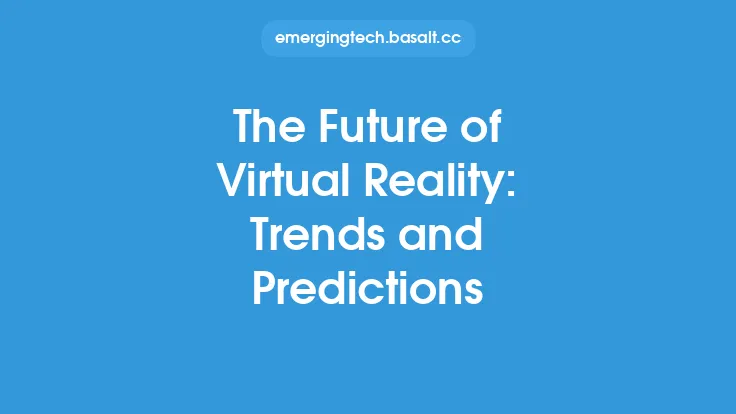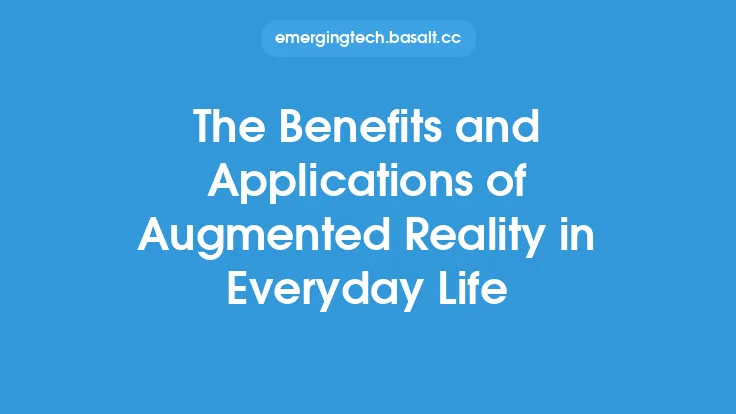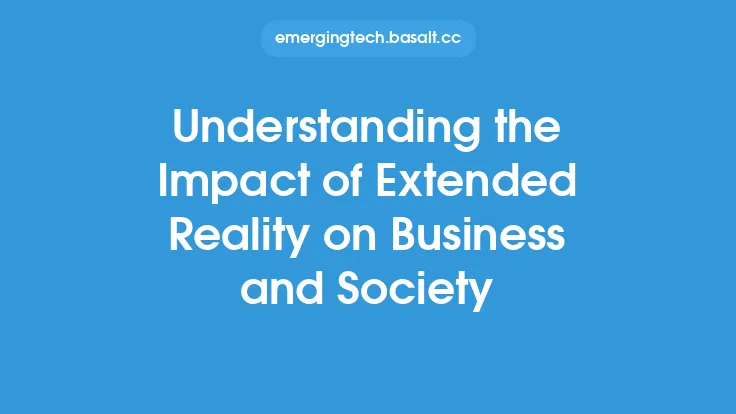The concept of virtual reality (VR) has been around for decades, but it's only in recent years that its potential for improving mental health and wellness has started to gain significant attention. VR technology has advanced to the point where it can simulate immersive and interactive environments that can be tailored to specific therapeutic needs. This has opened up new avenues for treating mental health disorders, managing stress and anxiety, and promoting overall wellness.
Introduction to Virtual Reality for Mental Health
Virtual reality for mental health involves the use of VR technology to create simulated environments that can help individuals overcome various mental health challenges. This can include exposure therapy for anxiety disorders, cognitive behavioral therapy for depression, and stress management techniques for individuals dealing with post-traumatic stress disorder (PTSD). The immersive nature of VR allows individuals to confront and overcome their fears in a controlled and safe environment, which can be particularly beneficial for those who struggle with traditional forms of therapy.
How Virtual Reality Works for Mental Health
The process of using VR for mental health typically involves several steps. First, a therapist or healthcare professional will assess the individual's specific needs and create a customized treatment plan. This plan may involve the use of VR headsets, controllers, and other equipment to create an immersive environment. The individual will then be guided through a series of exercises and activities designed to help them overcome their specific mental health challenges. For example, an individual with a fear of heights may be placed in a simulated environment that gradually increases in height, allowing them to become comfortable with the sensation of being in a high place.
Benefits of Virtual Reality for Mental Health
The benefits of VR for mental health are numerous and well-documented. Some of the most significant advantages include increased accessibility, improved outcomes, and enhanced engagement. VR therapy can be particularly beneficial for individuals who live in remote or underserved areas, as it can provide access to high-quality therapy that may not be available otherwise. Additionally, VR therapy has been shown to be highly effective in reducing symptoms of anxiety and depression, and can be used in conjunction with traditional forms of therapy to enhance outcomes.
Types of Virtual Reality Therapy
There are several types of VR therapy that can be used to treat mental health disorders. Exposure therapy is one of the most common forms of VR therapy, and involves the use of simulated environments to help individuals overcome their fears and anxieties. Cognitive behavioral therapy (CBT) is another form of VR therapy, which involves the use of simulated environments to help individuals identify and change negative thought patterns and behaviors. Mindfulness-based stress reduction (MBSR) is also a popular form of VR therapy, which involves the use of simulated environments to help individuals cultivate mindfulness and reduce stress.
Technical Requirements for Virtual Reality Therapy
The technical requirements for VR therapy can vary depending on the specific application and the level of immersion desired. However, some of the most common technical requirements include high-resolution headsets, advanced graphics processing units (GPUs), and high-speed computers. The use of controllers and other input devices can also be beneficial, as they can provide individuals with a sense of agency and control within the simulated environment. Additionally, the use of eye-tracking technology and other forms of biometric feedback can help therapists monitor an individual's progress and adjust the treatment plan accordingly.
Future Directions for Virtual Reality and Mental Health
The future of VR for mental health is exciting and rapidly evolving. As VR technology continues to advance, we can expect to see even more sophisticated and immersive forms of therapy. The use of artificial intelligence (AI) and machine learning (ML) algorithms can help therapists develop more personalized and effective treatment plans, and the integration of VR with other forms of therapy can help enhance outcomes and improve accessibility. Additionally, the development of more affordable and accessible VR technology can help make VR therapy more widely available, and can help reduce the stigma associated with mental health treatment.
Conclusion
In conclusion, the benefits of virtual reality for mental health and wellness are clear. VR technology has the potential to revolutionize the way we treat mental health disorders, and can provide individuals with a safe and effective way to overcome their fears and anxieties. As VR technology continues to evolve, we can expect to see even more innovative and effective forms of therapy. Whether you're a therapist, a healthcare professional, or simply an individual looking to improve your mental health and wellness, VR is definitely worth considering. With its ability to provide immersive and interactive environments, VR has the potential to make a significant impact on the field of mental health, and can help individuals achieve greater overall wellness and happiness.





